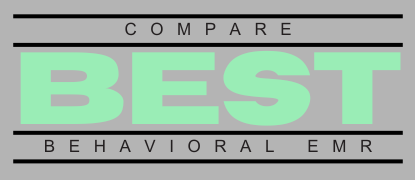
If you’ve been running a behavioral health practice for any length of time, you’ve probably experienced the love-hate relationship that comes with your EMR data. Sure, the system promises efficiency, better documentation, and easier billing, but how often do you find yourself staring at endless tables, wondering, “What am I supposed to do with all of this?” You’re definitely not alone.
The truth is, your behavioral health EMR can either be your best friend or a frustratingly complicated puzzle. But with the right approach, you can unlock valuable insights from that pile of data and actually use them to improve patient outcomes and your bottom line. Let’s dive into exactly how to turn those overwhelming data points into clear, actionable strategies.
Why EMR Data Matters (Yes, Really!)
First, let’s get real: data is only useful if you can actually do something with it. I’ve worked in practices where we’ve had EMRs that collected data beautifully but just ended up as a digital dust collector because no one knew how to interpret it. Sound familiar?
When properly leveraged, behavioral health EMR systems can:
– Identify gaps in patient care and treatment effectiveness.
– Optimize workflow and staff productivity.
– Reduce operational costs and billing errors.
– Enhance patient satisfaction and engagement.
But the key is knowing what to look for and how to act on it. So here’s how to become an EMR data whisperer.
Step 1: Set Clear Goals for Your EMR Data
Before you jump in, ask yourself: what’s the main goal you hope to achieve by analyzing your EMR data? Is it improving patient outcomes, streamlining billing and revenue cycle management, or maybe reducing clinician burnout?
For instance, we once set a goal at my former practice to reduce no-shows by 15% within six months. By using our EMR data from a solution like SimplePractice, we immediately spotted patterns: patients who didn’t confirm appointments via text reminders were much more likely to miss them. We then implemented a quick follow-up call for unconfirmed appointments, and voilà, no-shows dropped by nearly 20%.
Having a clear goal makes the data actionable. Without goals, your EMR data will feel like trying to cook without a recipe—sure, you have ingredients, but what are you actually making?
Step 2: Track the Right Metrics
Not all data is created equal. Depending on your goal, you’ll want to track relevant metrics. Here are a few common examples:
Clinical Outcomes Metrics
These include patient symptom reduction, treatment compliance, patient satisfaction scores, and treatment duration. Many behavioral health EMRs, such as TherapyNotes or Kareo by Tebra, offer built-in tools to help you track these metrics easily.
Operational Efficiency Metrics
Think about appointment no-show rates, clinician utilization, billing turnaround times, and revenue per patient. A robust EMR like Valant or AdvancedMD can provide detailed reports to help you optimize these areas.
Patient Engagement Metrics
This includes portal usage rates, message responsiveness, and patient satisfaction surveys. Modern EMRs like TheraNest or DrChrono offer patient engagement tools that can help you monitor these metrics closely.
Step 3: Regularly Review and Act on Your Data
The next step is making data review a regular, scheduled activity, rather than an afterthought. I know, I know, you’re busy. But scheduling just 30 minutes once a week or biweekly can make a huge difference.
For example, when I ran a clinic, we reviewed our EMR reports every Friday afternoon, usually with coffee and donuts, because why not? This habit allowed us to spot small issues before they became big problems, like noticing increased clinician burnout from overscheduling. We quickly adjusted calendars, and staff morale improved dramatically.
Step 4: Involve Your Entire Team
Don’t try to be the EMR hero alone. Trust me; I’ve tried, and it wasn’t pretty! Involve your clinicians, administrative staff, and billing specialists. Each team member can offer unique insights into the data, insights you might never notice on your own.
Remember, your receptionist might notice scheduling patterns, while clinicians might spot treatment trends. When everyone contributes, your behavioral health EMR becomes a powerful, collaborative tool rather than just another annoying software.
Step 5: Choose the Right Behavioral Health EMR
Sometimes, you’re not the problem—it’s your EMR. Not all EMRs are created equal, and if your current system feels like wrestling an octopus each day, it might be time to reconsider your options.
To find the best EMR for your specific needs, consider factors like:
– Ease of use: Can your clinicians quickly and intuitively document sessions?
– Reporting capabilities: Can the EMR deliver meaningful and actionable reports?
– Integration: Does it seamlessly integrate with your RCM or CRM software?
If you’re feeling overwhelmed by the choices (and who isn’t?), take advantage of our free practice analysis. Our experts will review your practice’s unique needs and help you identify the best EMR solution, no octopus wrestling required.
Step 6: Continuously Improve and Adapt
Lastly, remember that using EMR data effectively is an ongoing process. The healthcare landscape constantly evolves, and so should your approach. Regularly reassess your goals, metrics, and EMR usage to ensure you’re staying ahead.
Conclusion: Put Your Behavioral Health EMR Data to Work (Seriously!)
Look, EMR data isn’t exciting on its own. No one ever said, “I can’t wait to analyze billing trends today!” But when leveraged correctly, your behavioral health EMR data is a goldmine of opportunity, improving patient care, boosting your team’s efficiency, and enhancing your practice’s profitability.
Ready to finally make sense of your EMR data and choose a system that works for you? Get your personalized recommendation today by scheduling a free practice analysis.
External Resources:
– Benefits of EMR in Behavioral Health: NCBI
– Electronic Health Records Overview: HealthIT.gov
– APA Guide to Behavioral Health EMRs
– SAMHSA Guide to Technology in Behavioral Health
